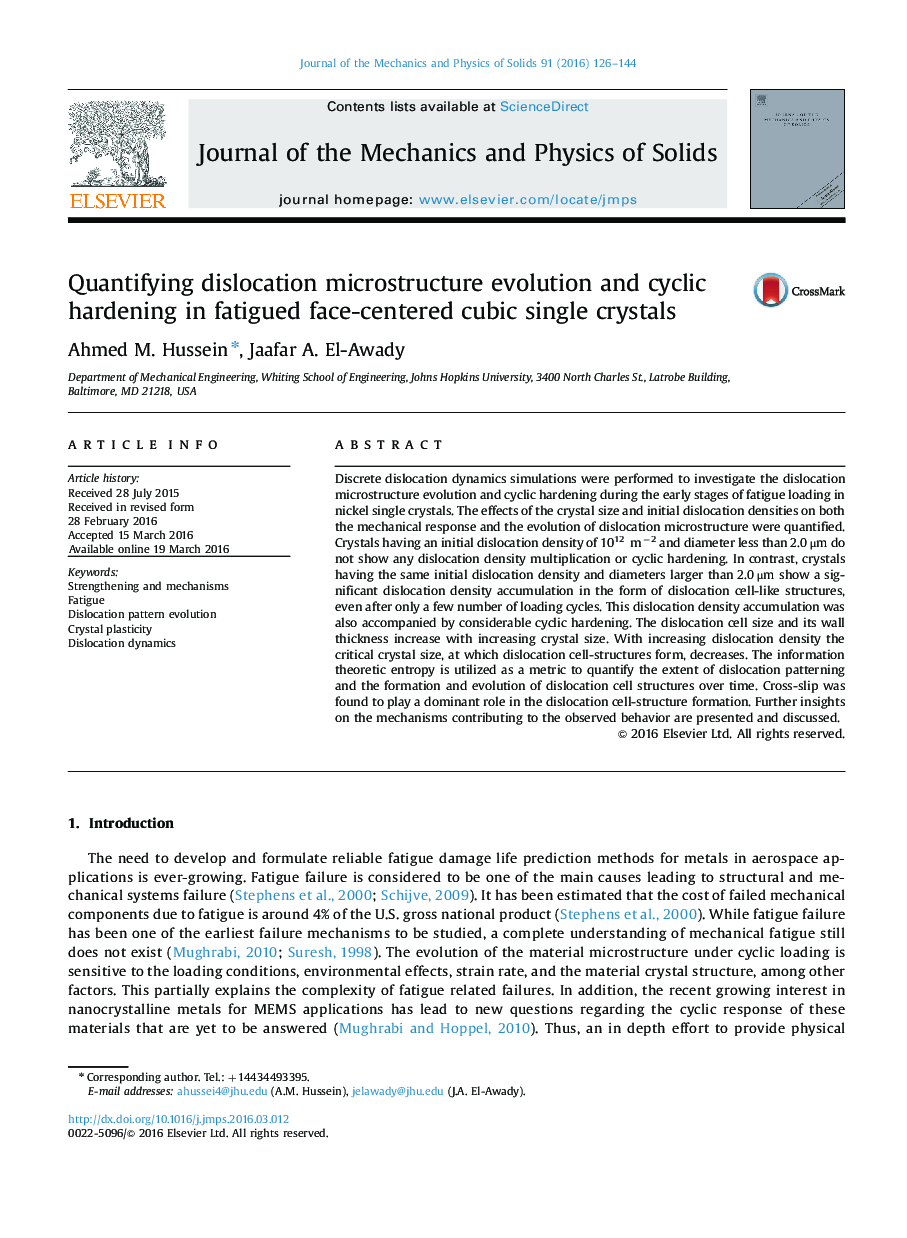| Article ID | Journal | Published Year | Pages | File Type |
|---|---|---|---|---|
| 7177793 | Journal of the Mechanics and Physics of Solids | 2016 | 19 Pages |
Abstract
Discrete dislocation dynamics simulations were performed to investigate the dislocation microstructure evolution and cyclic hardening during the early stages of fatigue loading in nickel single crystals. The effects of the crystal size and initial dislocation densities on both the mechanical response and the evolution of dislocation microstructure were quantified. Crystals having an initial dislocation density of 1012 mâ2 and diameter less than 2.0μm do not show any dislocation density multiplication or cyclic hardening. In contrast, crystals having the same initial dislocation density and diameters larger than 2.0μm show a significant dislocation density accumulation in the form of dislocation cell-like structures, even after only a few number of loading cycles. This dislocation density accumulation was also accompanied by considerable cyclic hardening. The dislocation cell size and its wall thickness increase with increasing crystal size. With increasing dislocation density the critical crystal size, at which dislocation cell-structures form, decreases. The information theoretic entropy is utilized as a metric to quantify the extent of dislocation patterning and the formation and evolution of dislocation cell structures over time. Cross-slip was found to play a dominant role in the dislocation cell-structure formation. Further insights on the mechanisms contributing to the observed behavior are presented and discussed.
Related Topics
Physical Sciences and Engineering
Engineering
Mechanical Engineering
Authors
Ahmed M. Hussein, Jaafar A. El-Awady,
